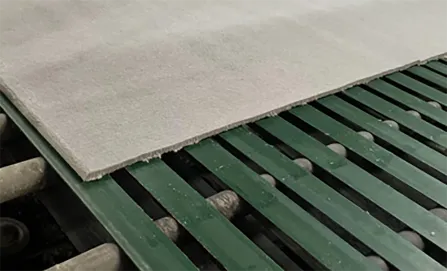- Afrikaans
- Albanian
- Amharic
- Arabic
- Armenian
- Azerbaijani
- Basque
- Belarusian
- Bengali
- Bosnian
- Bulgarian
- Catalan
- Cebuano
- Corsican
- Croatian
- Czech
- Danish
- Dutch
- English
- Esperanto
- Estonian
- French
- German
- Greek
- Hindi
- Indonesian
- irish
- Italian
- Japanese
- Korean
- Lao
- Malay
- Myanmar
- Norwegian
- Norwegian
- Polish
- Portuguese
- Romanian
- Russian
- Serbian
- Spanish
- Swedish
- Thai
- Turkish
- Ukrainian
- Uzbek
- Vietnamese
Δεκ . 29, 2024 12:56 Back to list
Ceiling Access Panel for Easy Inspection and Maintenance Access
Understanding Ceiling Inspection Hatches Importance and Installation
Ceiling inspection hatches, often overlooked, play a critical role in various building maintenance operations. These access points provide crucial entry to spaces above suspended ceilings, making them essential for routine inspections, maintenance of utilities, and ensuring the overall safety of a structure.
What Are Ceiling Inspection Hatches?
A ceiling inspection hatch is a small access door installed in the ceiling that allows access to spaces above, typically for the purpose of inspecting or maintaining utilities such as electrical systems, plumbing, and HVAC (Heating, Ventilation, and Air Conditioning). These hatches are designed not only for functionality but also to blend seamlessly with the surrounding ceiling, maintaining aesthetics while providing practicality.
Importance of Ceiling Inspection Hatches
1. Ease of Access for Maintenance One of the primary benefits of ceiling inspection hatches is the ability to access hard-to-reach spaces quickly and safely. Maintenance personnel can easily check and service equipment without the need for scaffolding or other complex setups. This ease of access can lead to more timely maintenance, reducing the risk of system failures.
2. Safety Compliance In commercial buildings, especially, safety codes often require that access points be available for emergency inspections and for routine maintenance checks. Regular inspections of electrical wiring, plumbing lines, and HVAC components are vital for compliance with safety regulations, minimizing risks such as gas leaks or electrical fires.
3. Cost-Effective Solutions Installing ceiling inspection hatches is a cost-effective way to minimize potential repairs and damages that might arise from neglected maintenance. By facilitating regular checks and maintenance, building owners can save significant money over time, ensuring that their property remains in optimal condition.
4. Enhancing Property Value Buildings that incorporate well-designed inspection hatches can often command a higher market value. Potential buyers and tenants appreciate the foresight in maintenance and the ease of access to vital systems, contributing to an overall perception of a well-cared-for property.
Types of Ceiling Inspection Hatches
There are several types of ceiling inspection hatches available on the market, each suited for different purposes and aesthetics
ceiling inspection hatch

- Metal Hatches These are durable and often used in areas that require strength and resistance to damage, such as in industrial settings. Metal hatches can withstand significant wear and tear.
- Plastic or Composite Hatches Lightweight and often more affordable, these are suitable for residential use or less demanding environments. They can be painted or finished to match the surrounding ceiling.
- Fire-Rated Hatches In cases where fire safety is a concern, these hatches provide a barrier to smoke and flames, maintaining the integrity of fire-rated ceilings.
Installation Considerations
When installing a ceiling inspection hatch, several factors should be taken into account
1. Location The placement of the hatch should allow easy access to the systems it serves, while also being strategically decided to avoid interrupting the aesthetic flow of the ceiling design.
2. Size It’s essential to choose the right size for the inspection hatch. Too small might hinder access, while too large could weaken the surrounding structure.
3. Sealing and Insulation Proper sealing is crucial to prevent air leaks if the hatch is also benefiting HVAC systems. Insulation could be necessary for energy efficiency.
4. Building Codes and Regulations Ensuring that installations comply with local building codes is vital. Safety regulations may dictate the type of materials used, size, and placement of the hatch.
Conclusion
Ceiling inspection hatches, while often underestimated, are indispensable elements of building maintenance and safety. By ensuring easy access to essential systems, they play a crucial role in maintaining the integrity, efficiency, and safety of a structure. Whether in residential or commercial settings, these hatches offer a blend of practical functionality and enhanced property value, making them a wise investment for any property owner.
-
Transform Interiors with PVC Gypsum Ceiling: A Stylish, Durable, and Moisture-Resistant SolutionNewsMay.19,2025
-
The Smart Interior Upgrade: Discover the Durability and Versatility of Gypsum Ceiling Access Panel SolutionsNewsMay.19,2025
-
The Smart Choice for Interior Design: Discover the Value of PVC Gypsum Ceiling SolutionsNewsMay.19,2025
-
Mineral Fiber Ceiling Tiles: The Smart Blend of Performance and AestheticsNewsMay.19,2025
-
Mineral Fiber Ceiling Tiles: The Superior Choice Over Gypsum for Sound and Fire SafetyNewsMay.19,2025
-
Mineral Fiber Ceiling Tiles: Eco-Friendly Strength and Style for Every CeilingNewsMay.19,2025







